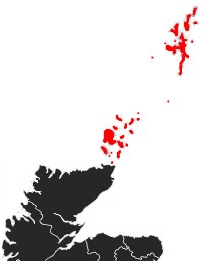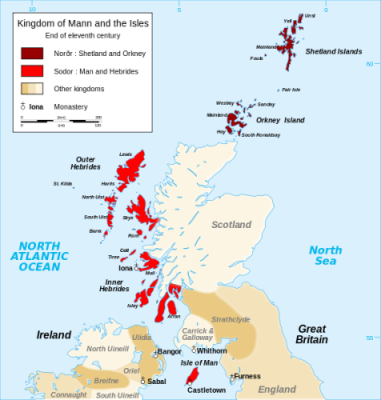Archaeologists discover 10th Century Viking drinking hall during dig in Orkney
Archaeologists in Orkney have discovered what is thought to be a Viking drinking hall that dates back to the 10th Century. The site, at Skaill Farmstead in Westness, Rousay, may have been used by the chieftain Sigurd. Stone walls, benches, pottery and a fragment of a Norse bone comb were found during the excavation. Further work will be undertaken to gain an insight into the life of those in Orkney from the Norse period to the 19th Century. Westness is mentioned in the Orkneyinga Saga as the home of Earl Sigurd, a powerful 12th Century chieftain. The Orkneyinga Saga is a historical narrative of the history of the Orkney and Shetland islands. The main focus of the work is the line of jarls (earls) who ruled the Earldom of Orkney, which constituted the Norðreyjar or Northern Isles of both Orkney and Shetland.
Orkney was once a seat of Norse power as witnessed in its Viking heritage evident today in such things as place names and architecture. The Viking interventions began in the 8th century AD. The Islands of Scotland and the Isle of Man formed the Northern and Southern Isles. The Northern Isles of Shetland and Orkney were known to the Norse as Norðreyjar. The Southern Isles forming the Kingdom of Mann and the Isles (sometimes known as The Kingdom of the Isles) consisting of the Hebrides, the islands in the Firth of Clyde and the Isle of Man were known as Suðreyjar. The Norwegian King Harald Hårfagre took control of the Northern Isles (Norðreyjar) in 875 AD and they became an earldom. They were ruled as a province of Norway and under the Jarl (Earl) during the Earldom of Orkney (rule also extended into parts of Caithness and Sutherland). King Christian I pledged the Islands as security for the dowry of his daughter Margaret of Norway who became Queen Margaret of Scotland (1469 to 1486) upon her marriage to James III of Scotland. The dowry not being paid the islands became part of the Kingdom of Scotland in 1471. Norwegian law was not abolished in Shetland until 1611 and the Norse based language of Norn continued in common use for over two centuries after that.







